We frequently get questions about whether or not a crumb shows evidence of underproofing or overproofing. Having baked plenty of examples of both I thought I would share how I look at the baked bread to decide if it is under or over.
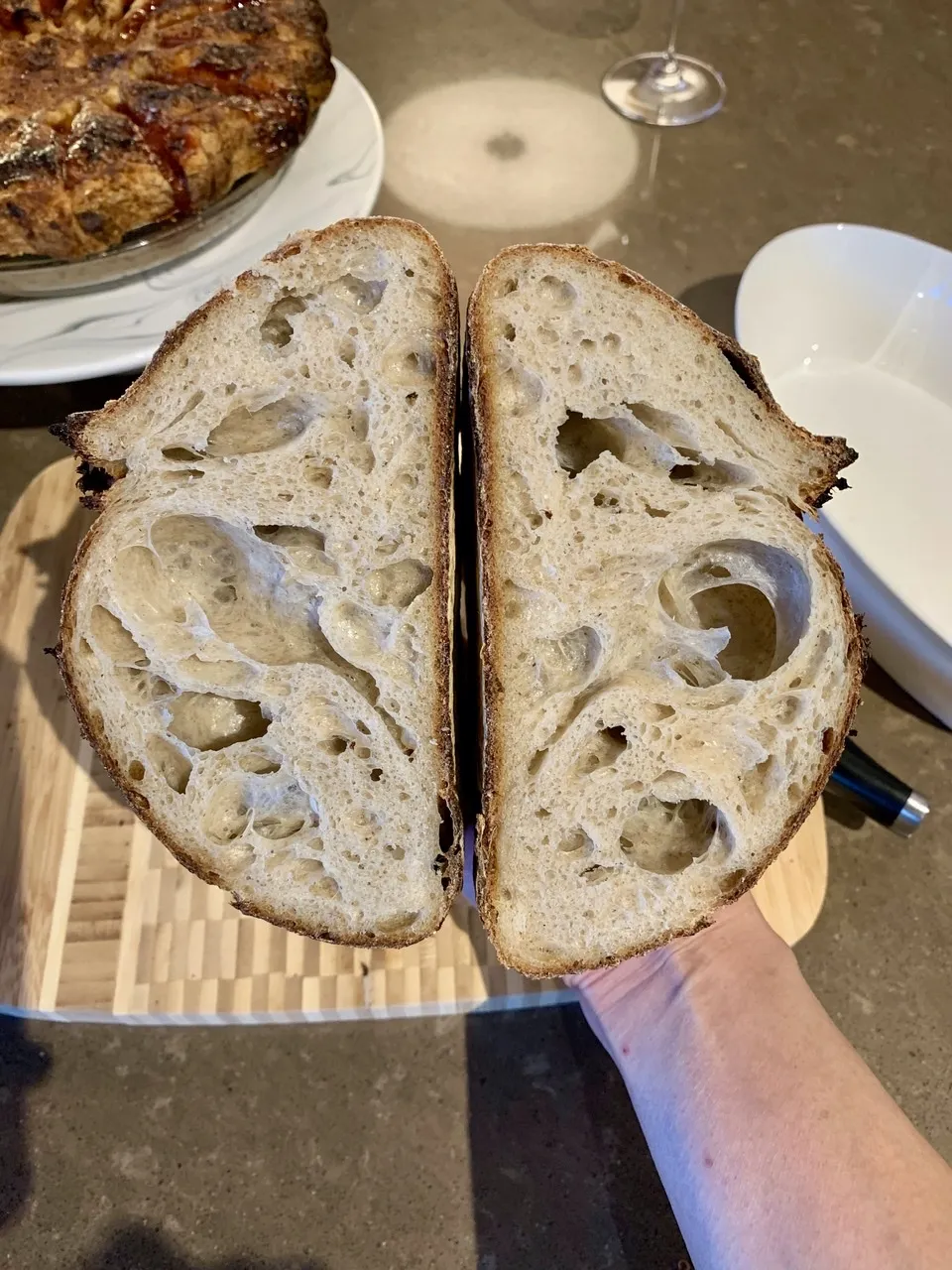
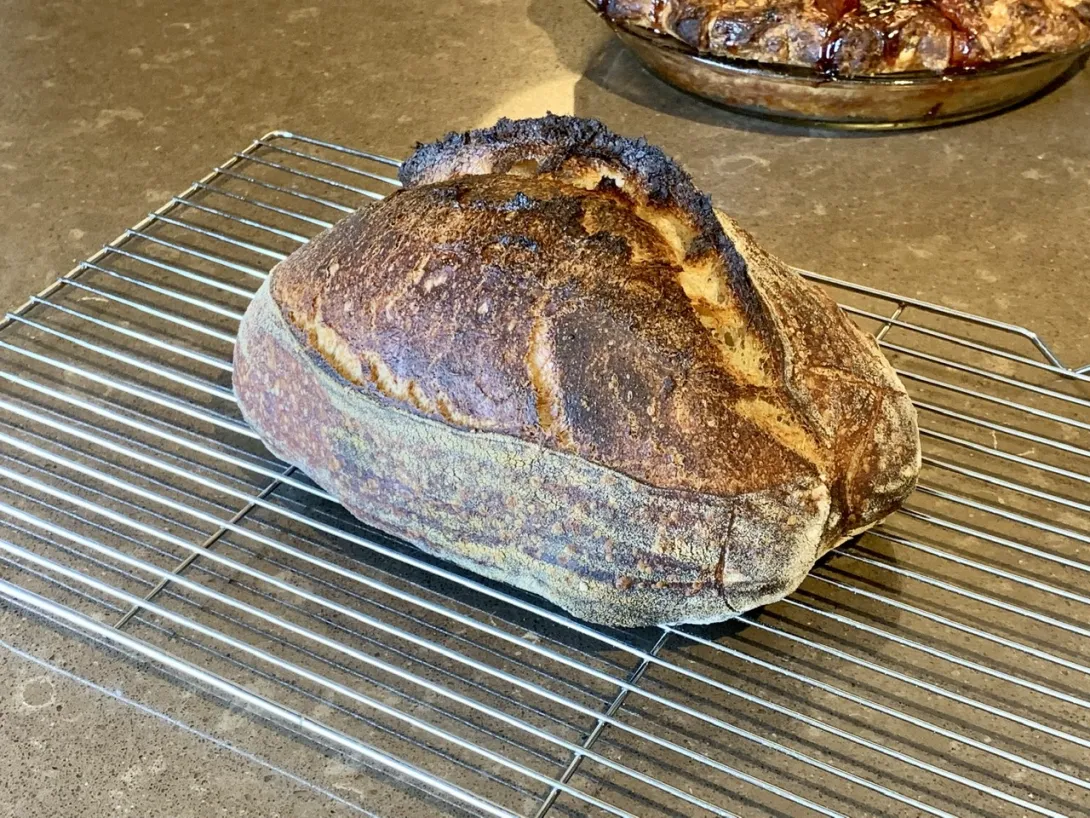
This first loaf has some pretty classic signs of underproofing. Looking at the crumb, I find it helpful to ignore the big holes first and have a look at the crumb. Is the crumb very tight and dense or is the crumb actually quite nice and open. Generally if it is very tight and dense, it is more likely to be underproofed than just right or overproofed. Next look at the large holes. Are these large holes actually big long tunnels through the bread? Are they generally in the upper half of the bread and not immediately under the crust? In underproofed breads the big holes have a tendency to be large tunnels in the upper half of the bread and not ones immediately under the crust. Next, sometimes there are clues before you even slice the loaf. I unfortunately didn’t get the best photos of the outside of this loaf to demonstrate this, but you might see an exaggerated oven spring and ear. In fact the center of the bread might even be quite pointy as it is pushed upwards by the expansion of those huge tunnels in the bread while baking.
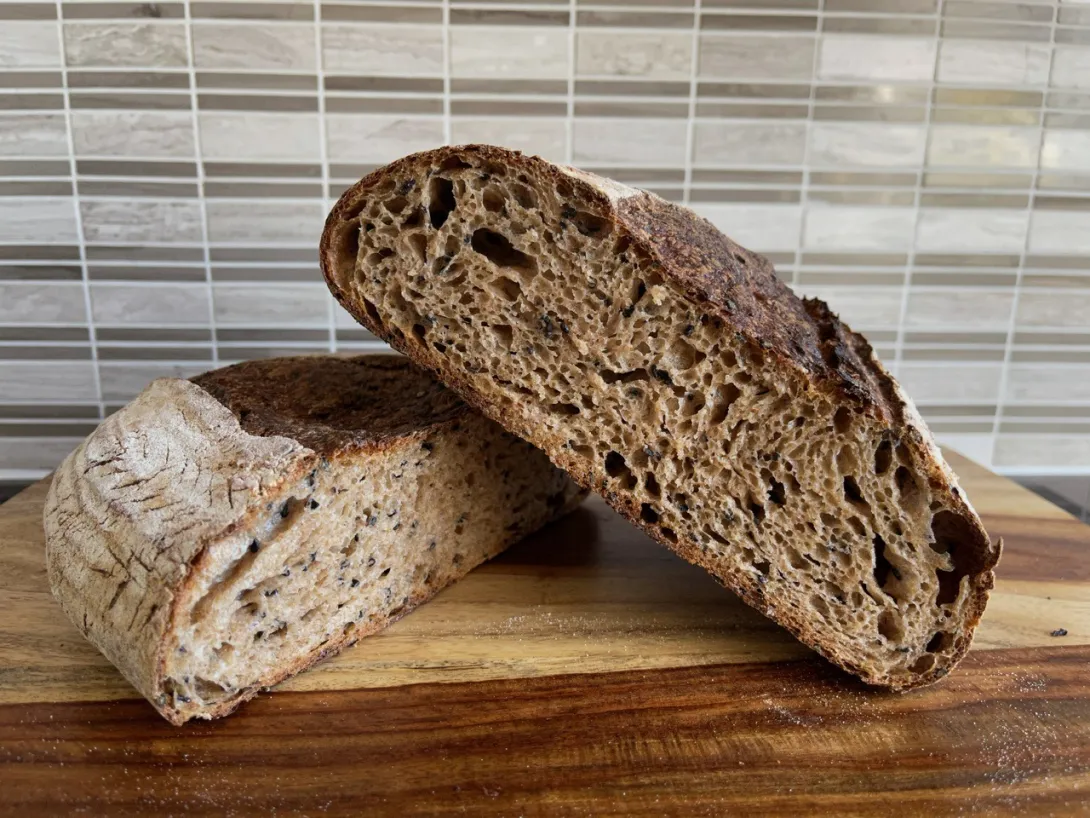
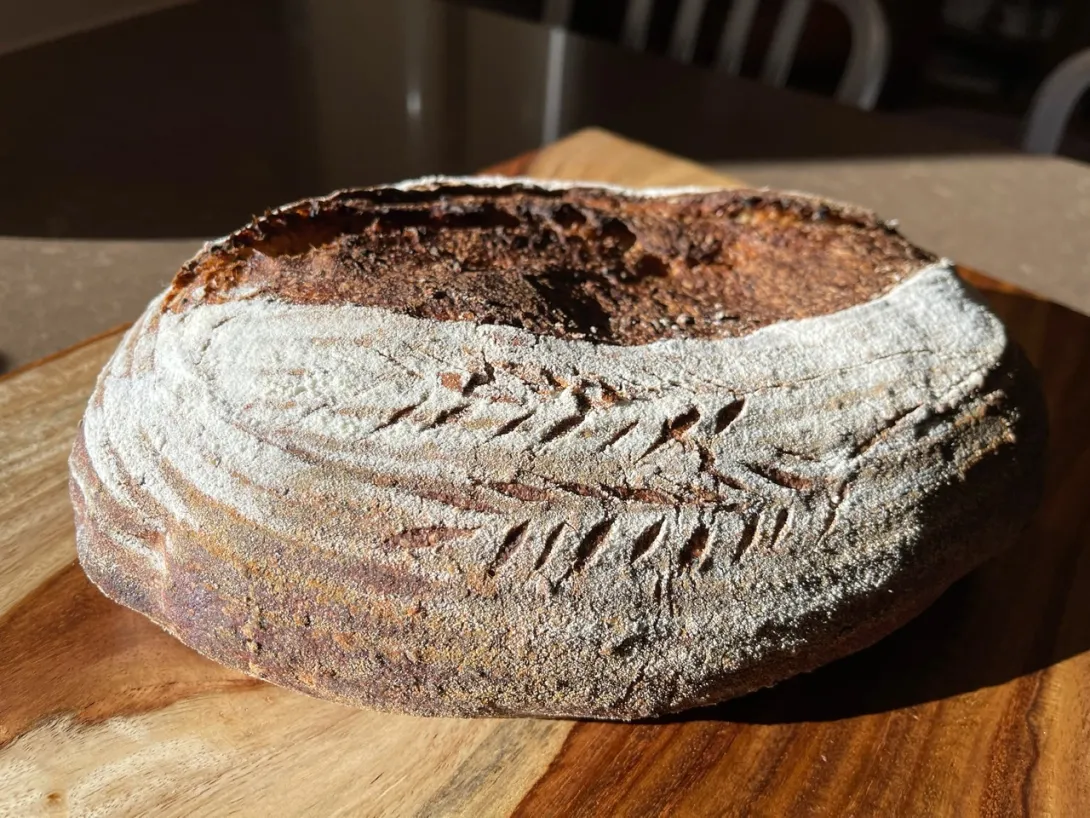
This next loaf has signs of overproofing. Let’s start again with the crumb and ignore any larger holes. The crumb in this example isn’t particularly tight or dense despite it being 100% whole grain, so it isn’t likely underproofed. So it could be just fine or overproofed. Now look for the larger holes. In this case the larger holes are just under the crust and if you look closely you’ll see some broken gluten strands. These broken gluten strand happen because as the dough overproofs, the gluten becomes weaker as the pH falls activating the proteolytic enzymes. Then as the gases expand in the oven when baking the weakened gluten fails and smaller alveoli coalesce to become larger ones. Next let’s look at the outside of the loaf. The weakened gluten affects the outward appearance of the loaf. Again rather than expanding upwards, the loaf spreads as the gases expand as the gluten breaks down so we often get a flattened loaf. The ear is often unable to form properly so you might get only a small ear at best. In the area of the score you’ll often a collapsed area rather than a crust that stands proud.
What do you look for to decide if a loaf is over or under?
Benny
I was wondering if you could explain a little bit more about your desired rise during bulk using your aliquot jar for reference? I’ve notice in your posts that you sometimes look for a 60 and sometimes even an 80% rise depending on the grain before shaping. And I know a lot of people look for their dough to X but I thought these longer rise times were more for shorter room temperature final proofs.
I’m still learning to get a feel for it and push my bulk times to around a 40% rise at 24C in a Cambro container. I’m measuring the rise from when bulk begins after mixing the levain. At this point I usually aim for a 30 min rest depending on temperature and activity after pre-shape, and another 30 min rest after shaping before a 16+- hour cold proof at 4.5C.
Thank You!
Johnny
Keep in mind that the aliquot jar over estimates the rise of the main dough. This is primarily because it isn’t being folded which the main dough is and those folds will degas the dough somewhat. For doughs that are primarily white flour I have been aiming to shape around 60% rise, I’d like to go further but my shaping skills aren’t good enough to handle 70% risen dough (by aliquot jar) so the max I’ve been able to handle is 60%. Now because I’ve found out the hard way, 100% whole grains don’t always tolerate as much fermentation, my best 100% whole grain loaf was shaped at 50%, anything more seemed to result in a flat overproofed loaf when there was also some further final proofing.
It is in final proofing that I will often wait until the aliquot jar shows a final rise of up to 95% (I’d like to push further but haven’t yet and my overproofed 100% whole grain breads have made me a bit gun shy) before starting cold retard.
Benny
Thank you Benny! I’ve been poring over some of your recipes and I knew I was missing something about your seemingly high bulk rise. BTW you inspired me recently to throw some black sesame seeds into a bolted Redeemer Loaf! Delicious!
Johnny
Hope you enjoyed the black sesame seed addition Johnny, I always enjoy them in bread.
By the way, if anyone has a photo of their overproofed bread inside and out that they would be willing to share I could update my photos in my original post. I couldn’t find a more severely overproofed one earlier today when I quickly looked. Thanks. Benny
Nice write up, Benny; I'm sure it will be a great future guide for beginners (and not so beginners!) with fermentation problems.
Lance
Thank you Lance, I hope it is helpful to some bakers. I certainly gradually learned to read the crumb over the past 2 years here, but I never really read it all in one place. I’ve also had to learn while over and under fermenting, the “best” way to learn LOL.
Benny
It looks like a cadaverous bunny. Does the color of the crumb change during fermentation or is it the lighting?
I’m not seeing that on my iPad, it looks like a typical crumb colour for the flours used mostly bread flour, whole red fife and whole rye.
Benny, I don't know if this is a good photo, but this is 100% home milled white wheat, no sifting, 12 hour autolyse, BF went way too far - I was at work, it was something over 100% increase in volume.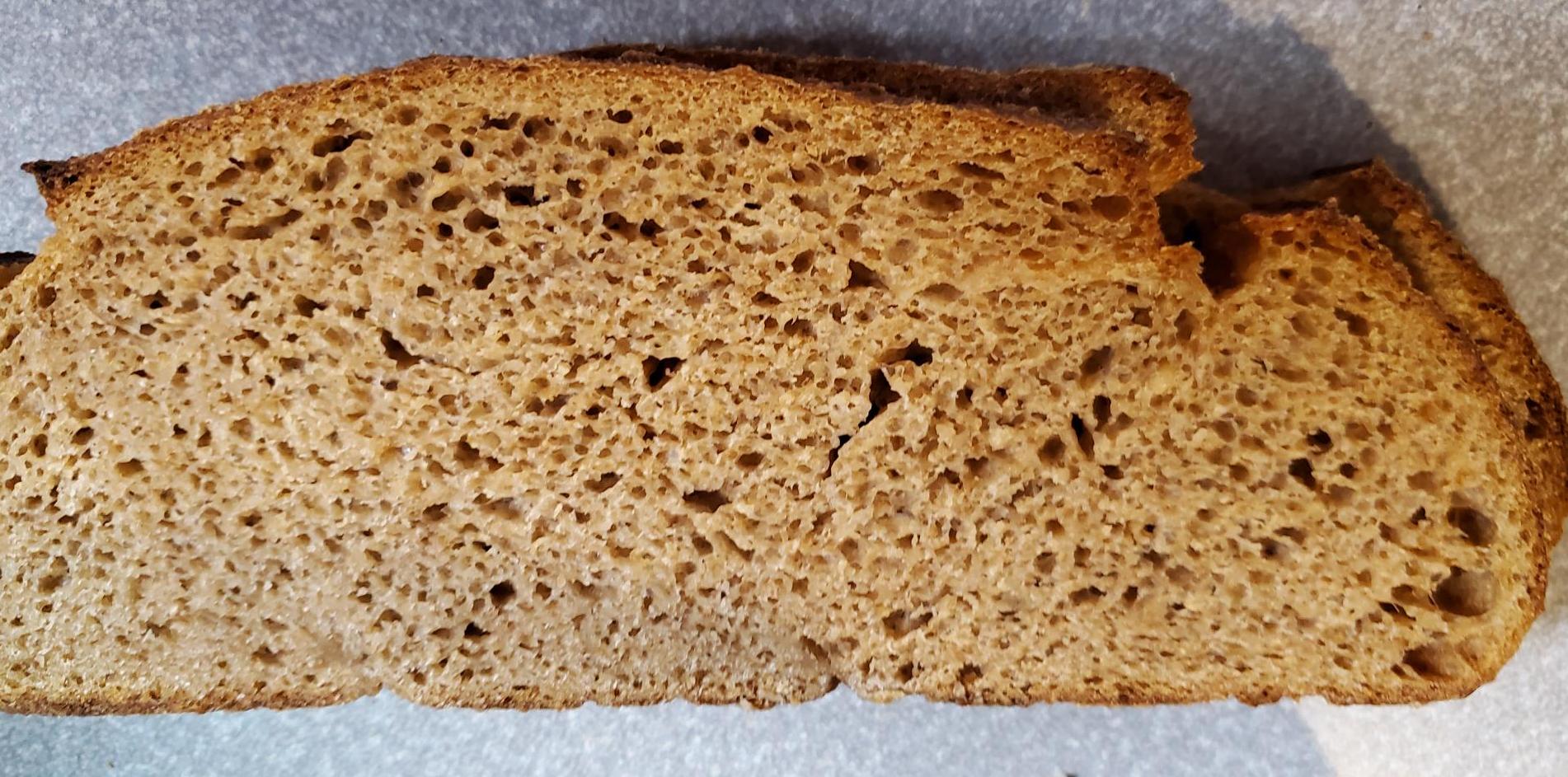
Thanks for your photo Barry, your bread doesn’t look as overproofed as mine!
Benny, nicely articulated. A good reference. The pictures make it clear.
Thank you Gavin, hopefully it is useful to some folks here.
Indeed very useful! Thanks a lot, Benito, I definitely should have read that earlier!